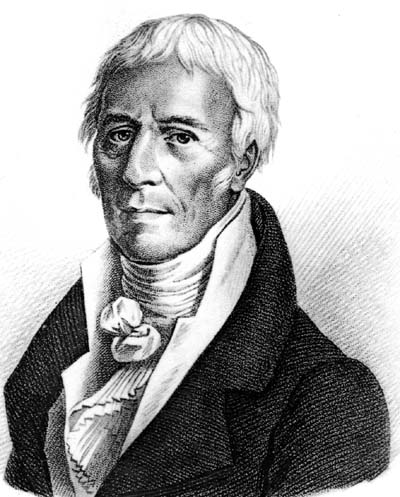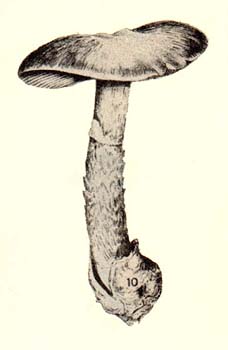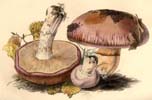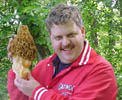|

|
 One can gather the scope of his intellectual curiosity from the title of his (2 vol.) book Recherches sur les causes des principaux faits physiques : et particulièrement sur celles de la combustion, de l'élévation de l'eau dans l'état de vapeurs ... de l'origine des composés et de tous les minéraux; enfin de l'entretien de la vie des êtres organiques, de leur accroissement, de leur état de vigueur, de leur dépérissement et de leur mort, which I translate as "Researches on the cause of the principal physical facts: in particular, the nature of combustion, of the evaporation of water into vapor ... of the origin and composition of all minerals; finally of the life of organic beings, of their growth, their state of vigor, their decline and death". The first puzzle (combustion) was actually solved by Lamarck's compatriot Lavoisier (who, unlike Lamarck, did not make it through the French Revolution) during Lamarck's own lifetime. The evaporation of water and the composition of minerals had to await the elucidation of atoms, molecules, and elements. And of course, we still don't know exactly how life works. This is someone who knew how to ask the big questions. His place in the French savantocracy was taken by Cuvier, who believed that species never changed.
One can gather the scope of his intellectual curiosity from the title of his (2 vol.) book Recherches sur les causes des principaux faits physiques : et particulièrement sur celles de la combustion, de l'élévation de l'eau dans l'état de vapeurs ... de l'origine des composés et de tous les minéraux; enfin de l'entretien de la vie des êtres organiques, de leur accroissement, de leur état de vigueur, de leur dépérissement et de leur mort, which I translate as "Researches on the cause of the principal physical facts: in particular, the nature of combustion, of the evaporation of water into vapor ... of the origin and composition of all minerals; finally of the life of organic beings, of their growth, their state of vigor, their decline and death". The first puzzle (combustion) was actually solved by Lamarck's compatriot Lavoisier (who, unlike Lamarck, did not make it through the French Revolution) during Lamarck's own lifetime. The evaporation of water and the composition of minerals had to await the elucidation of atoms, molecules, and elements. And of course, we still don't know exactly how life works. This is someone who knew how to ask the big questions. His place in the French savantocracy was taken by Cuvier, who believed that species never changed.
Volumes 5-8 and Supplements 1-5 are by Poiret
 Glossary |  Mushrooms |  |  People |  Newsletter |  Events |